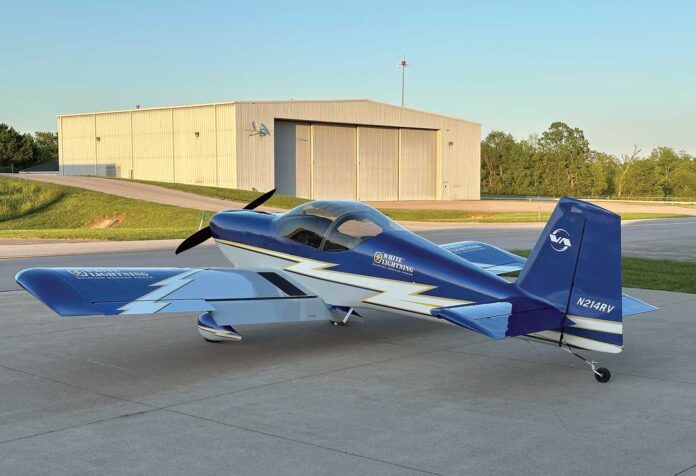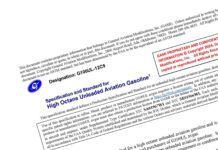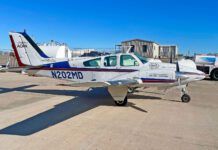White Lightning RV-14: Unleaded Avgas Poster Child
While he’s not a climate zealot, Jonathan Sisk admittedly supports responsible ecology by not emitting any amount of toxic lead into the atmosphere from the exhaust of his newly completed Van’s RV-14 “White Lightning” kit aircraft. It’s equipped with a 215-HP Lycoming YIO-390-EXP and before completing the Van’s kit, he did something that he strongly feels more kit builders should do and that’s add GAMI’s G100UL high-octane unleaded avgas to the aircraft’s fuel limitations section of the aircraft’s flight manual. Operators of certified aircraft can add G100UL to the aircraft’s operating limitations via STC, too, which is approved for every spark ignition piston engine and every airframe using a spark ignition piston engine in the FAA’s Type Certificate database.
Like any other STC modification process that has been around for years and years, GAMI’s FAA-awarded AML (Approved Model List) STC in 2022 followed a well-established FAA method to provide expansion of the applicable makes and models of aircraft and engines to use the fuel. Purchase the STC (pricing is based on engine model and horsepower rating) and you get a short Approved Flight Manual Supplement (AFMS) and G100UL placards to be installed around the fuel filler ports on the aircraft, plus one for the engine. There is a short set of routine ICAs (Instructions for Continued Airworthiness) and Installation Instructions for the placards. It’s that straightforward.
Sisk was convinced early on that G100UL would run just fine in his engine—regardless of STC approval. GAMI said that early in the development of G100UL avgas both Lycoming and Continental sent engineers to GAMI headquarters in Oklahoma, who evaluated G100UL avgas and flew a turbocharged Cirrus operating on G100UL avgas in one wing tank and 100LL in the other. GAMI said there was no objection raised by either of those two early OEM engine manufacturers to the performance of the G100UL avgas. Moreover, Cirrus Aircraft had one of its senior managers come to GAMI and fly the G100UL avgas in a Cirrus aircraft to evaluate its performance against 100LL. According to GAMI in a presentation at Sun n’ Fun last spring, the engine performed as good or better than it did on 100LL. G100UL is currently the only avgas to have an FAA-approved commercial production specification.
Sisk pointed out that avgas is the only remaining commercial fuel to contain tetraethyl lead (TEL) to boost octane for aviation piston engines. Lead in automobile gasoline has been outlawed since 1993. And, eliminating the tetraethyl lead octane booster from avgas also has practical operational benefits such as longer oil change intervals and reduced maintenance from not polluting the inside of the engine with lead deposits.
“If the White Lightning RV-14 can play some small role to increase public awareness and pilot confidence that an unleaded avgas solution will be found, then that is most gratifying,” Sisk told me. Have you purchased a G100UL STC or added the fuel to your experimental ops spec? We’d like to hear from you for an upcoming alternative fuel report.





